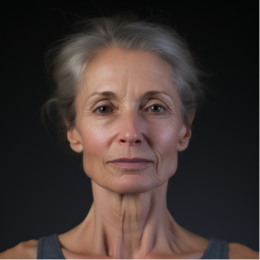What Is ADHD: Types, Symptoms, Causes, and Treatment

Attention Deficit Hyperactivity Disorder (ADHD) is a complex and widely misunderstood neurodevelopmental disorder that affects individuals of all ages. Its impact extends far beyond mere restlessness or impulsivity, permeating all aspects of life, including academics, relationships, and even self-esteem. ADHD challenges the traditional notions of attention and control, creating a unique set of strengths and struggles for those who live with it. In this article, we will delve into the intricacies of ADHD, exploring its symptoms, causes, and treatment options while shedding light on the experiences of individuals navigating the complexities of this condition.
What Is ADHD?
Attention-Deficit/Hyperactivity Disorder, more commonly known as ADHD, is a neurodevelopmental condition that often begins in childhood and can continue into adulthood. ADHD is characterized by inattention, hyperactivity, and impulsivity beyond what’s expected for a person’s age. This condition is further divided into three main types: Predominantly Inattentive Presentation, Predominantly Hyperactive-Impulsive Presentation, and Combined Presentation.
Statistics:
- ADHD affects an estimated 9.4% of children and 4.4% of adults in the United States, highlighting its significant impact across age groups (CDC, 2021).
- According to the Centers for Disease Control and Prevention (CDC), the prevalence of ADHD in children aged 2–17 years in the United States was approximately 9.4% in 2016. This means that nearly one in every ten children in the U.S. has been diagnosed with ADHD.
- Among these children, boys (13.2%) were more likely than girls (5.6%) to have ever been diagnosed with ADHD (CDC, 2021).
- The same CDC report indicated that about 4.4% of adults in the U.S. have ADHD. Although it’s less recognized in adults, it still poses significant challenges as symptoms can hinder occupational, academic, and social success. Adults with ADHD are also more likely to have comorbid conditions like depression, anxiety, and substance use disorders (CDC, 2021).
Types of ADHD

The National Institute of Mental Health (NIH) report details the three types of ADHD presentations. They report that individuals with Predominantly Inattentive Presentation make up the largest group, accounting for 30-40% of people with ADHD. Those with Predominantly Hyperactive-Impulsive Presentation account for less than a quarter of people with ADHD. The rest have the Combined Presentation (NIH, 2021).
- Predominantly Inattentive Presentation (ADHD-PI): Individuals with this type primarily struggle with inattention. They find it challenging to sustain focus, get easily distracted, and often appear forgetful or disorganized.
- Predominantly Hyperactive-Impulsive Presentation (ADHD-HI): This subtype is characterized by hyperactivity and impulsivity. People with ADHD-HI may fidget, talk excessively, have difficulty waiting their turn, and exhibit impulsive decision-making.
- Combined Presentation (ADHD-C): This is the most common subtype, where individuals display a combination of inattentive, hyperactive, and impulsive behaviors.
Symptoms of ADHD
Symptoms of the Predominantly Inattentive Presentation of ADHD include trouble focusing, disorganization, and forgetfulness, making it challenging to follow instructions or complete tasks. On the other hand, individuals with Predominantly Hyperactive-Impulsive Presentation may exhibit excessive fidgeting, impatience, and difficulty in remaining seated or quiet. As the name suggests, the Combined Presentation consists of a mixture of symptoms from both other types.
Causes of ADHD
Although the exact cause of ADHD remains unknown, research suggests that a combination of several factors may contribute. These include genetics, exposure to environmental toxins during pregnancy, low birth weight, and brain injury. It’s important to note that ADHD is not caused by poor parenting, excessive sugar, or watching too much TV, despite these misconceptions (NIH, 2021).
Treatment Options
So, how to treat ADHD in adults and children? It’s crucial to understand that while ADHD cannot be cured, it can be effectively managed. Treatment strategies, including medication, psychotherapy, education, and training, are typically multi-faceted.
Medications like stimulants are often prescribed and can help increase attention and control impulsivity and hyperactivity. Non-stimulant medications may also be used, especially when stimulants are ineffective or cause undesirable side effects.
Psychotherapy, including cognitive-behavioral therapy, can help people with ADHD to manage their symptoms better, develop coping strategies, improve their self-esteem, and build better relationships. Additionally, educational support can aid children in overcoming academic challenges associated with ADHD.
But what about how to treat ADHD without meds? Lifestyle changes, like regular physical activity, adequate sleep, and a healthy diet, can help manage symptoms. Moreover, behavioral therapies, mindfulness techniques, and neurofeedback can benefit adults and children with ADHD (Mayo Clinic, 2021).
Statistics:
- In terms of treatment, the CDC states that about 62% of children with ADHD were taking medication, and almost half received behavioral treatment for their ADHD in 2016.
- Among adults with ADHD, approximately 10.9% were estimated to be using medication for ADHD in the past week (CDC, 2021).
Conclusion
ADHD is a complex neurodevelopmental disorder that affects people of all ages. Understanding the types, symptoms, causes, and available treatment options is essential for individuals with ADHD, their families, and healthcare providers. While medication can be an effective treatment tool, a comprehensive approach that includes behavioral therapy and lifestyle modifications is generally recommended.
Furthermore, for adults seeking alternatives to medication, non-medication approaches such as psychoeducation, mindfulness, and cognitive strategies can offer additional support in managing ADHD symptoms effectively.
References:
- Centers for Disease Control and Prevention (CDC). (2021). ADHD Throughout the Years. https://www.cdc.gov/ncbddd/adhd/data.html
- National Institute of Mental Health (NIH). (2021). Attention-Deficit/Hyperactivity Disorder. https://www.nimh.nih.gov/health/topics/attention-deficit-hyperactivity-disorder-adhd/index.shtml
- Mayo Clinic. (2021). Attention-deficit/hyperactivity disorder (ADHD) in children. https://www.mayoclinic.org/diseases-conditions/adhd/diagnosis-treatment/drc-20350892





